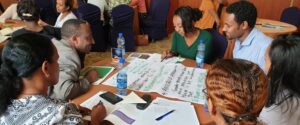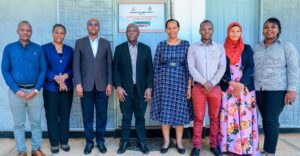What does ‘Capacity Building’ really mean?
Jonathan Harle is Programmes Manager (Research Capacity) at the Association of Commonwealth Universities
A few weeks back, Jonathan Tanner of ODI offered some important observations about the way we talk about development. His plea is that we use the word ‘development’ less (‘it is too easy to hide behind the word ‘development’… it is too easily misunderstood, it doesn’t always mean the same thing…’), to ‘be more precise about the work we do’ and to ‘junk the jargon’. His thrust is that we need to get better at being much clearer about what we mean – not simply use ‘development’ as a catch all which disguises more than it explains. We need to do this not only so those outside the sector can understand but also so we can be clearer amongst ourselves.
Jonathan’s article got me thinking particularly about the language we use in our little corner of the development sector — a corner we often label with the tag of ‘research capacity building’ (or ‘strengthening’, or even ‘development’ again). In the past couple of months I’ve been invited to review a couple of reports which broadly fall into this area. These were all very valuable reports, but I often found myself trying to work out what was actually being said. Research capacity building is a phrase I find myself using repeatedly to describe what I do as I sit at my desk firing emails off around the world and generating endless Word docs. But what does it really mean? And does it even mean much at all, most of the time?
We tend to use it as neat shorthand, to avoid some lengthy description or title, and to capture many different types of activities or interventions – from scholarships for individual researchers, to large grant programmes, to work which is aimed at a national policy level. There’s nothing wrong with this of course. If you can ditch a lot of unnecessarily long sentences in every report or paper and instead can sum it all up in a few words, then that’s great. The trouble is I’m not so sure we can all of the time.
Just as Tanner says of ‘development’ (that it ends up hiding the detail of what is really taking place, and is too easily misunderstood), I think we often end up in the same place with ‘research capacity’ and efforts to ‘build’ or ‘strengthen’ it. We’re constantly conflating a whole host of needs, problems, interventions, activities, and in doing so are in danger of obscuring more than we enlighten. This is particularly so when we hitch research capacity to words and phrases like ‘sustainable’ and ‘equitable’, or ‘southern-led’ or use it alongside words like ‘networks’. It’s easy to end up with a whole sentence where each word is carefully chosen to convey a more detailed set of concerns. The process is brilliant, assuming we all have the same definition of what each word conveys, but, sadly, it too often becomes painfully hard to work out what is actually being said.
I’m not suggesting we should, or even can, ditch ‘capacity’. It’s a vital concept, not least because it can point us to the need to support something which endures beyond a single project. But I think there are a few things we can do more to be clearer about what we mean.
First of all, we can call it what it is — if it’s a scholarship programme, we should call it that, so we get to the specific type of intervention faster.
We can also do more to reflect on what we’re really trying to say when using a term like ‘capacity building’. I find myself asking: does the reach for an easy crutch mean we’re not that clear about what we mean ourselves; and are we disguising the complexity of something which might lead to poorer programme design?
Finally, we can ensure that in the process we demystify what we’re doing, for ourselves, our funders, and most importantly those we’re seeking to support.




